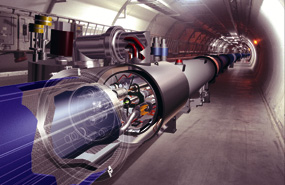Physicists from the United States for the first time predicted the violation of parity in collisions between electrons. The results, which are consistent with the predictions of the standard model, provide new measurements of the weak charge of the electron.

Belle Dumas, Physics Web
Physicists from the United States for the first time predicted the violation of parity in collisions between electrons. The results, which are consistent with the predictions of the standard model, provide new measurements of the weak charge of the electron.
The parity is maintained in the interaction, if it does not change as a result of the inversion of all the directions of the space. Three of the four fundamental forces in nature preserve parity - gravity, the electromagnetic force and the strong force - but the weak force, which is responsible for beta decay, does not preserve it.
In Experiment 158E at SLAC, the Stanford Linear Accelerator Center, a beam of energetic electrons was fired at a liquid hydrogen target. The electron beam was polarized, when the spins of the electrons were in the direction of the beam (right polarization) or in the opposite direction (left polarization).
The experimental team measured the rate at which the electrons ejected electrons from the hydrogen target and calculated the difference, or asymmetry, in the rate of scattering of right and left electrons. The difference was 175 parts per billion, with a percent error of 30 parts per billion, meaning this is the most accurate measurement of the asymmetry in electron scattering experiments to date. The team used the results to calculate the electron's weak charge, which is a measure of the strength of the weak force between two electrons. They arrived at a result of -0.053 with an accuracy of 0.011 either way. Their result corresponds to the prediction of the standard model, which is -0.046.
However, the value of other parameters in the standard model were measured with less precision than in high-energy experiments in collisions between electrons and positrons, and the 158E team intends to reduce the uncertainty in the experiment to 10 in a billion.
Translation: Dikla Oren
